Our new guest, the fine artist and tattoo artist, has found a reflection of his passion for architecture in ornamental tattoos. He uses his knowledge of architectural principles, such as multi-dimensional symmetry and proportions, to create complex, voluminous, meditative, and aesthetically pleasing tattoos. What lies behind these intricate and intricate patterns, how architects get into tattooing, and where this path leads - Alex White will tell us.

Let's start with the classic: Why did you decide to become a tattoo artist?
- I have always liked tattoos, probably since childhood, like everyone else. But, like everyone else, I was told that it's bad. In school, I used to draw tribal tattoos on friends. But I had to choose a "serious" profession, so I decided that I would be an architect.
So, how did your career start? What difficulties did you face in mastering the profession? Who was your teacher?
- I graduated from the Belarusian National Technical University and worked as an architect for a few years. But I always dreamed of tattoos, not of doing them, but just of having one. I made it happen. I wanted to try to do it myself. My friend introduced me to his friend, a tattoo artist named Zola, in 2010. She showed me what and how. I also bought my first machine from her.
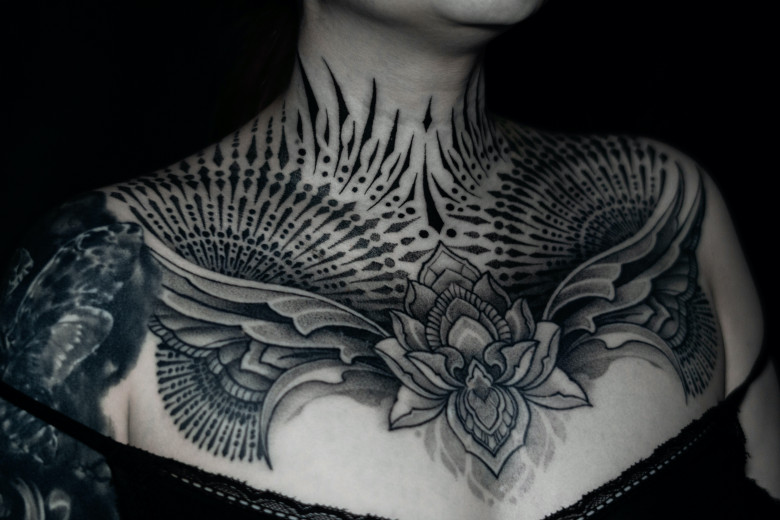
Then I decided to get more tattoos and see how it was done at the same time. That's how I met Alexander Miheenko and Maxim Melnik.
Alexander probably doesn't know that he helped me a lot at the beginning. Thank you for that! Then I went to study in one salon in Minsk, where I gained experience and realized that some things should not be done. For several years, I tried to combine my job as an architect and a tattoo artist, tattooing friends in the evenings and on weekends. But it was very difficult, and I realized that I needed to choose one thing. I chose tattoos, and it's hard to say why I made that choice, but I've never regretted it. Thank you to my wife for her support. At one point, Max called me and suggested that we rent an apartment together for work. That's probably when everything started.
For you, is tattooing art, work, or something else?
- Tattooing is both art, work, and hobby—it's everything. It takes up all my time.
Your tattoo artist portfolio and your work as a whole reflect your passion for ornamentalism. Where does it come from? And what do all these patterns mean to you?
- The passion for ornamentalism probably comes from architecture. I've always liked to draw, symmetry, geometry, graphics, etc. That's probably why I love ornamentalism.
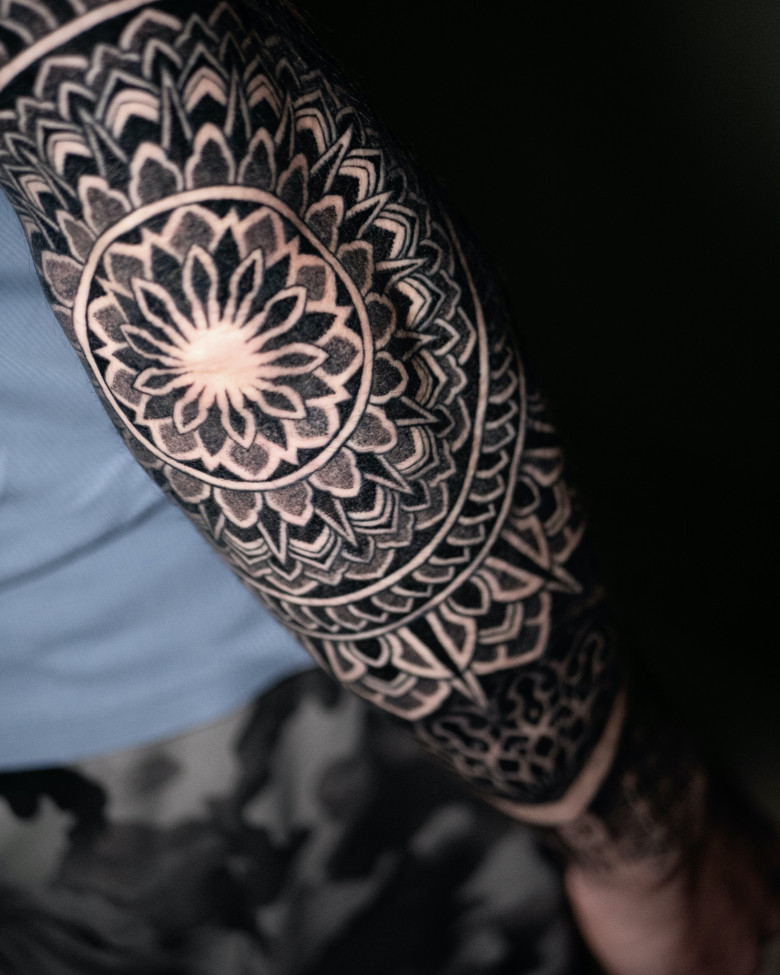
Where do you find inspiration for new projects?
- Inspiration can come from anywhere and anytime. Of course, it's important to keep an eye on what's happening in the world of tattoos, follow trends, and be inspired.
What is the most important thing for you in tattooing?
- It's hard to single out the most important thing, in fact, everything is important: the idea, the design, the anatomy...
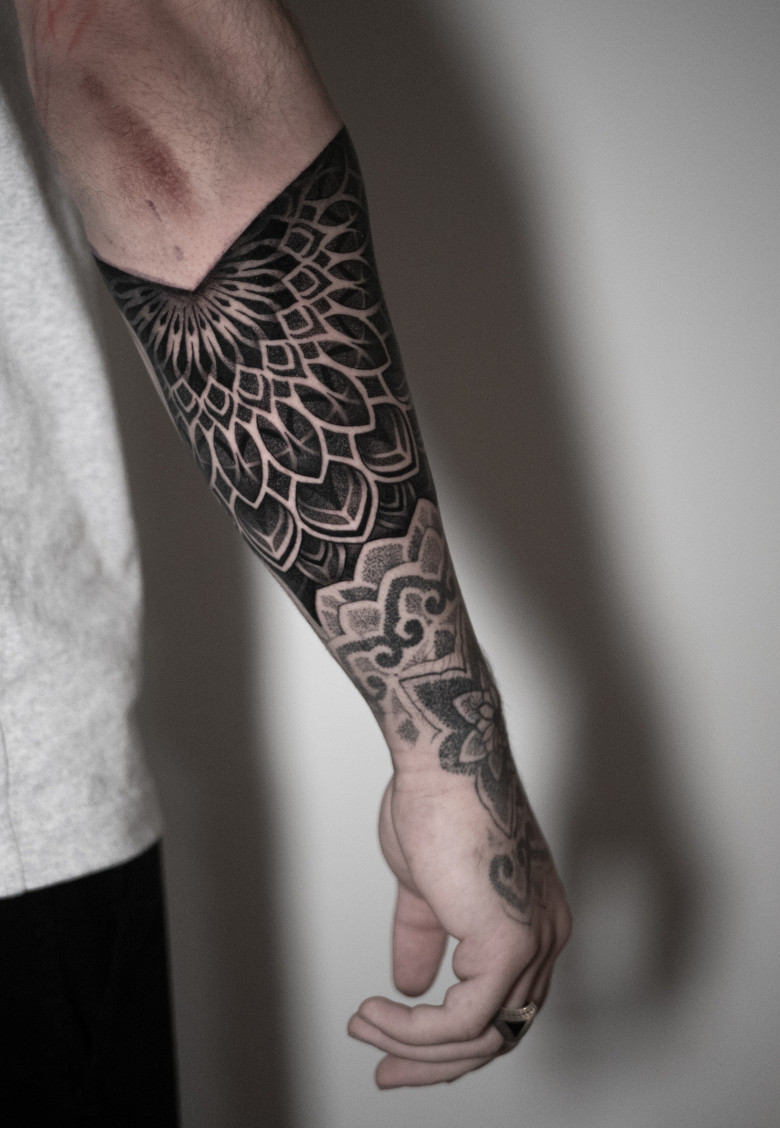
I'm always interested in the artist's perspective, so to speak, “from the inside”. What features of your works do you distinguish for yourself?
- I don't know, I just do what I like. Many may say that the ornamental style is boring and all the same, but that's not the case. There are many masters working in this style now, and each has their own.
Let's say I wanted to get a tattoo from you. What do I need to do, tell, or describe? Can you share the inside process with me?
- If you want to get a tattoo from me, it is best to meet for a consultation and conversation, but that is not always possible. In that case, I ask the client to send a few examples, no more than 3-5, so that they can clearly describe what they want. After that, I prepare the design. Sometimes we meet before the session to try on the design and not waste time on corrections during the session.
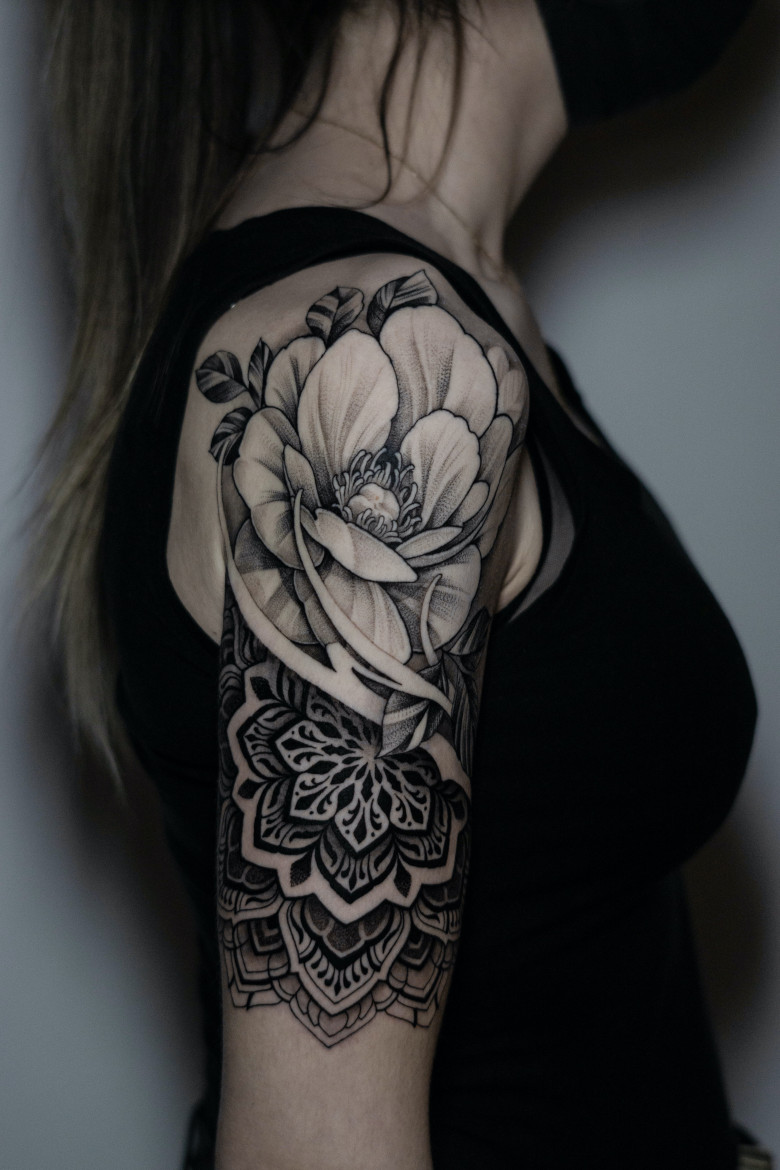
We have seen that you are preparing designs for large tattoo projects using 3D modeling. Tell us, how does the development of technology affect the development of tattoo art?
- The development of technology has greatly affected tattooing. Machines have become much more convenient, quieter, and lighter. A huge number of needle configurations. Thanks to tablets, it has become much easier to make designs.
Are there any tattoo artists or artists who inspire you? Whose work do you follow? Can you name your TOP-5?
- There are a lot of cool talented tattooists right now. It's very hard to choose only 5, but I'll try: @tohaeltattoo, @pastorelli_tattoo, @gaya_tree_, @ilyacascad, @abian_lamotta.

Have you traveled a lot? Where have you already been? Is there a place on this planet that you are always ready to return to?
- Yes, I've been able to travel a bit. Thanks to my job, I've visited many countries: Poland, Lithuania, France, Germany, Belgium, Italy, Cyprus, the Netherlands, and the USA. However, I would like to see more. I especially like the Netherlands and the USA - California. There I felt at home, and that feeling cannot be explained in words.
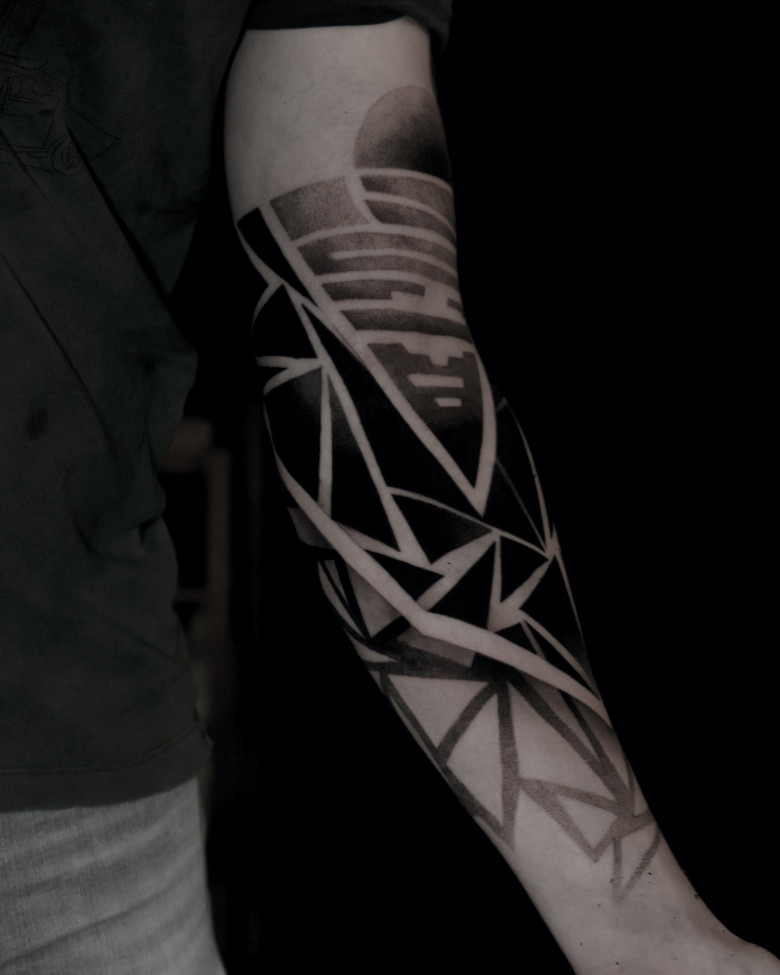
Your wooden mandalas are simply amazing! Tell us about this part of your creativity.
- Thank you. It's my hobby. My meditation. It's really cool to work in the workshop. But lately, due to constant relocations, I can't fully engage in this. There are several projects that I want to implement, and I hope to be able to do this soon.
Besides the ornamentalism that can be seen in your tattoos and wooden items, there's also another aspect - acrylic paintings. However, you use a completely different style in them. What is it? A search for new creative boundaries?
- Acrylic is a completely new tool for me, my first canvases appeared thanks to my friend Max (@chanishev_mxm), he opened acrylic for me. I had never painted on canvases before. The style was inspired by my friend, a cool artist, Alexey (@kesselart). I think he's currently exhibiting in Moscow and St. Petersburg.
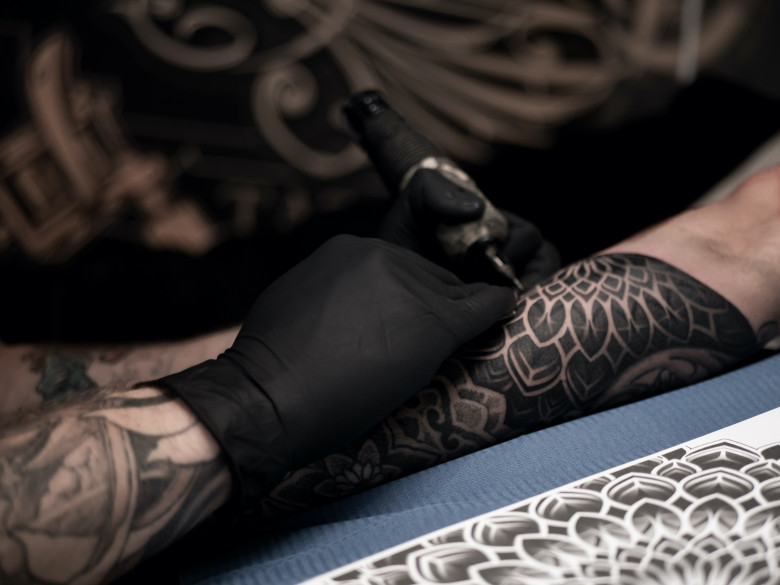
What career goals do you set for yourself?
- It's difficult with goals now. I think last year changed the plans of many. So for now, we are creating, floating with the flow. But there are some ideas and dreams. Let's believe that everything will work out.
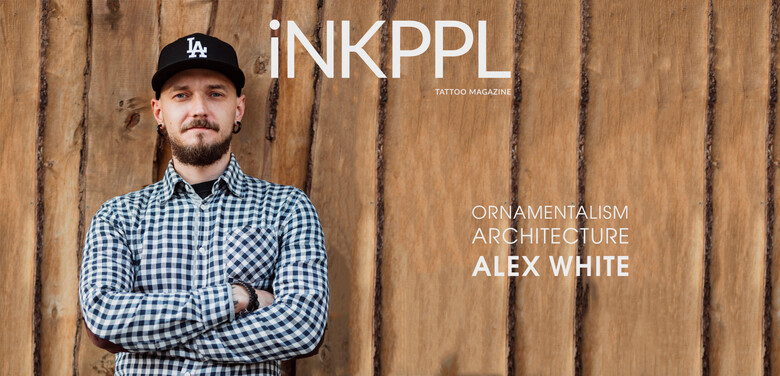







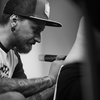
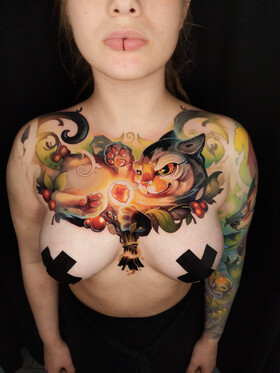

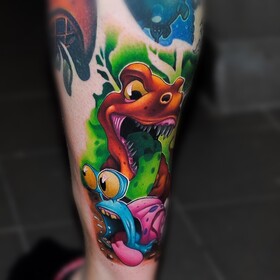
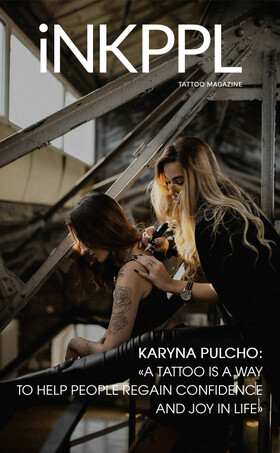
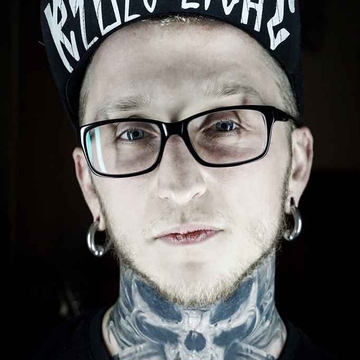
Comments (4)